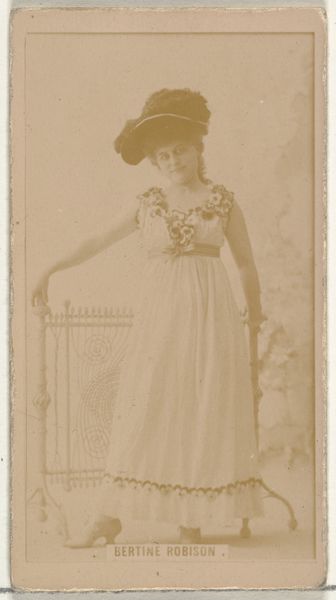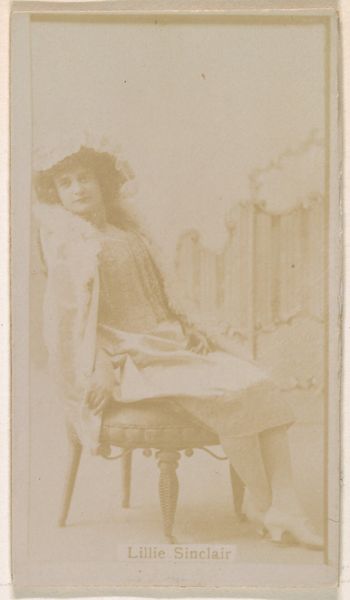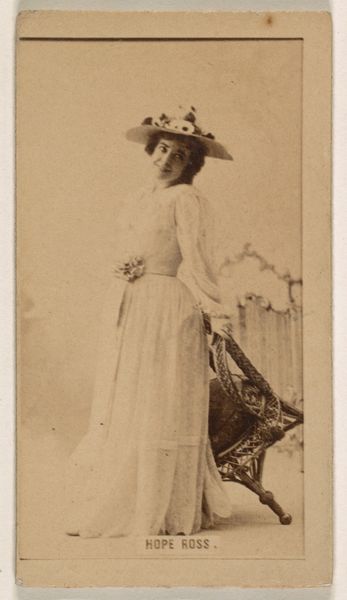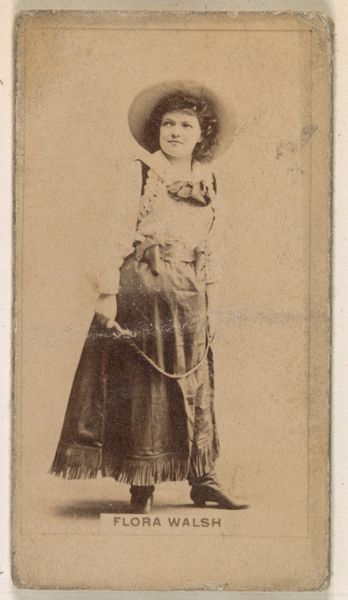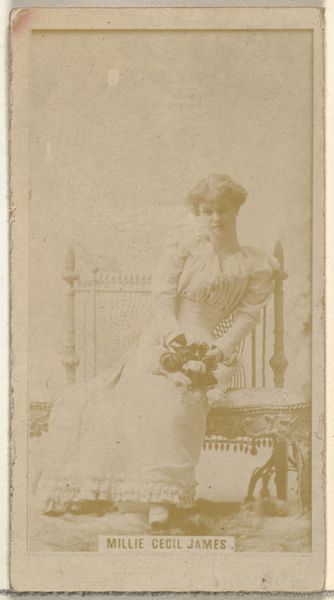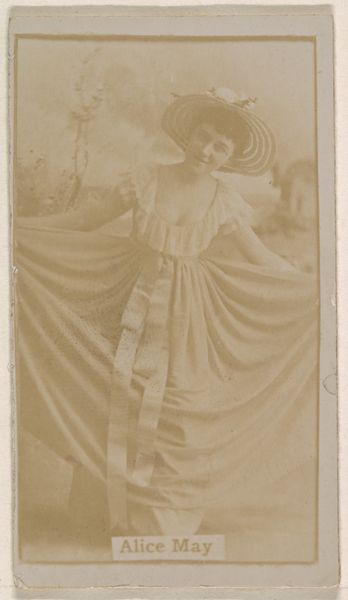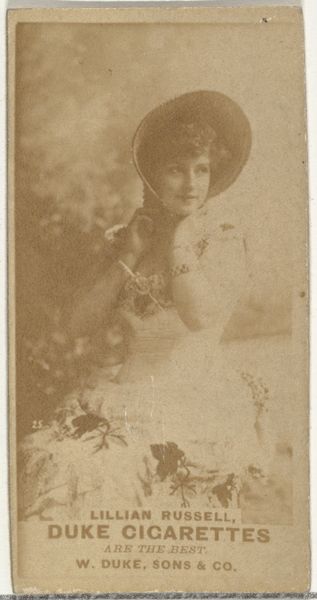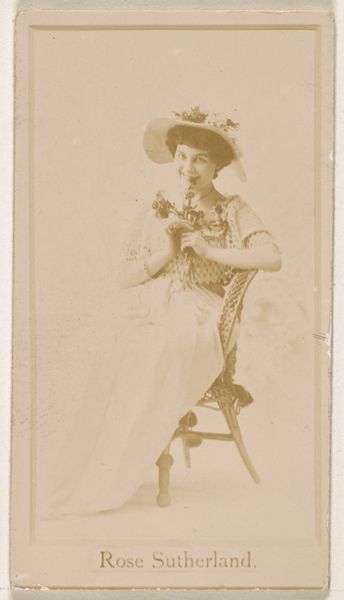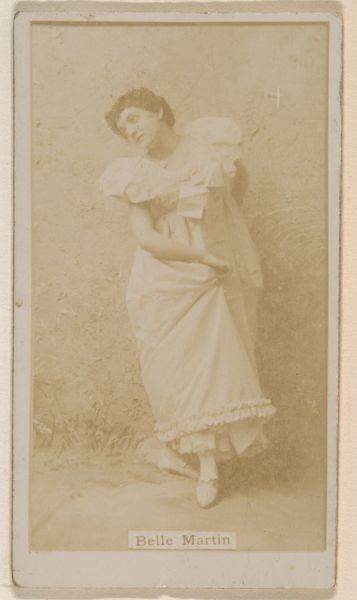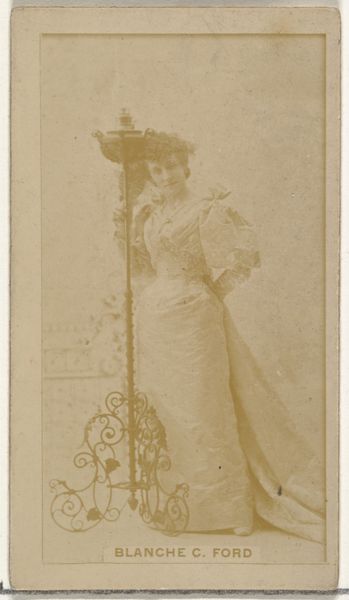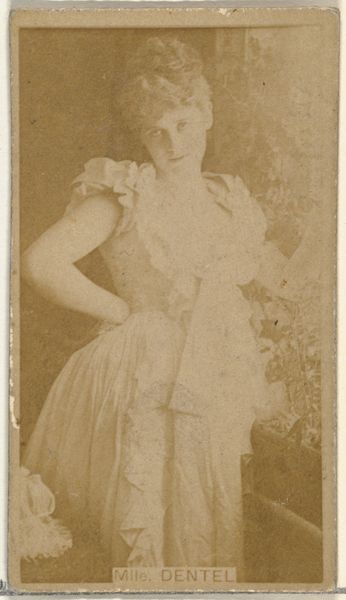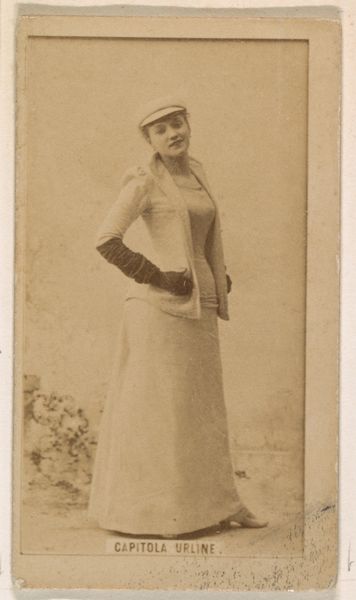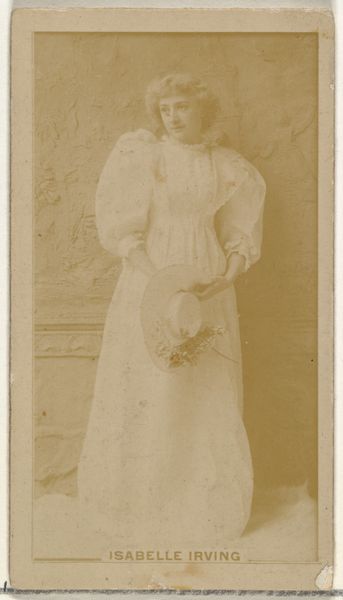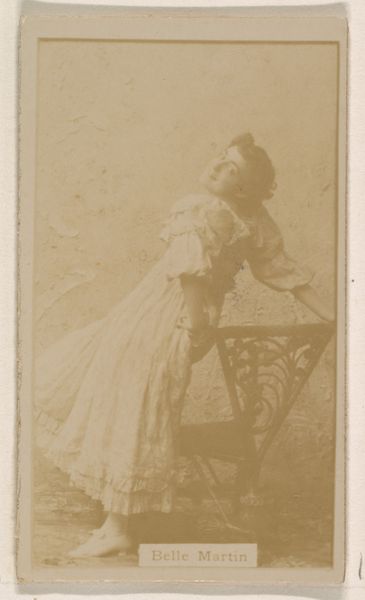
Lilie Sinclair, from the Actors and Actresses series (N145-8) issued by Duke Sons & Co. to promote Duke Cigarettes 1890 - 1895
0:00
0:00
Dimensions: Sheet: 2 11/16 × 1 3/8 in. (6.8 × 3.5 cm)
Copyright: Public Domain
Curator: Here we see "Lilie Sinclair, from the Actors and Actresses series" created between 1890 and 1895. It was a promotional print produced by W. Duke, Sons & Co. to promote their Duke Cigarettes. Editor: My first impression is of a very stylized romanticism. There’s a deliberate theatricality in her pose and attire that speaks to the construction of celebrity. The image, rendered in sepia tones, evokes a sense of nostalgic yearning for a seemingly more genteel past. Curator: The composition absolutely highlights the symbols of that time. Sinclair’s elaborate hat, the style of her dress, her positioning next to an ornate chair, all tell a specific story. The portrait belongs to a series of trading cards that used popular actresses to promote cigarettes, aligning a product with beauty and aspiration. It makes one wonder how the figure of Lilie Sinclair signified these aspirations, especially her placement in a series of cards that feature other actresses. Editor: Yes, the context of tobacco advertising, which heavily relied on associating itself with beauty, youth, and desirability, reveals the exploitative mechanisms at play. These images perpetuated idealized femininity, which had far-reaching implications. While Sinclair might have had agency as a performer, her image here is strategically manufactured for a specific consumerist agenda, subtly reinforcing gendered expectations within the rising mass culture. Curator: Exactly, these small cards, which are reminiscent of ukiyo-e prints, use an almost archetypal figure to draw customers. Even today, one can imagine the potent symbolic weight it carried. Tobacco companies continue to carefully use iconic figures that sell an emotion, a feeling. Editor: This piece demonstrates that cultural narratives have long been intertwined with the mechanisms of power and commerce. Examining it through the lens of contemporary gender theory exposes its embedded ideologies. These images speak not just to what was considered desirable, but also what was marketable in shaping societal perceptions of women. Curator: I find that the power of symbolism endures through these artifacts; consumerism has always carefully used archetype and allegory to sell. Editor: Indeed, understanding such historical techniques can grant us critical insights into current forms of media and marketing. The strategic crafting of images that link specific ideas, social positions, or desired effects to consumer goods.
Comments
No comments
Be the first to comment and join the conversation on the ultimate creative platform.
